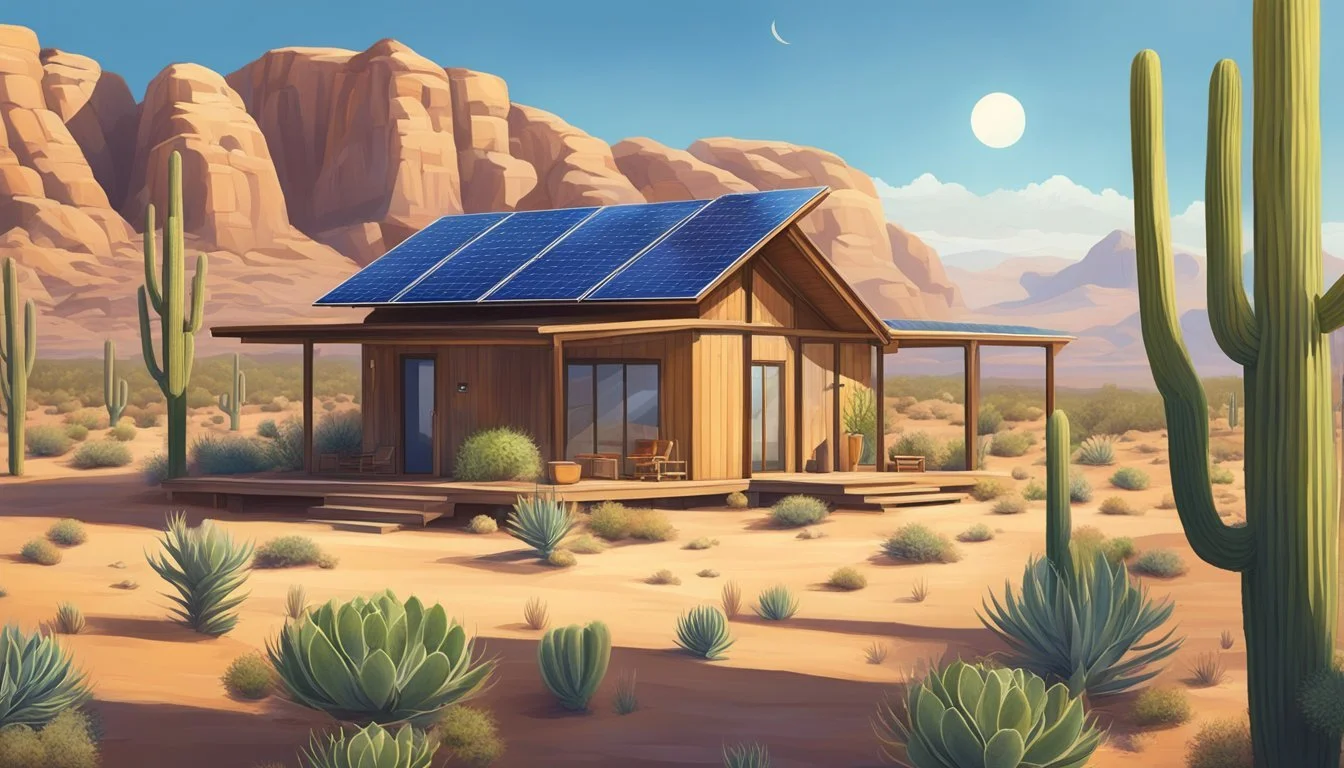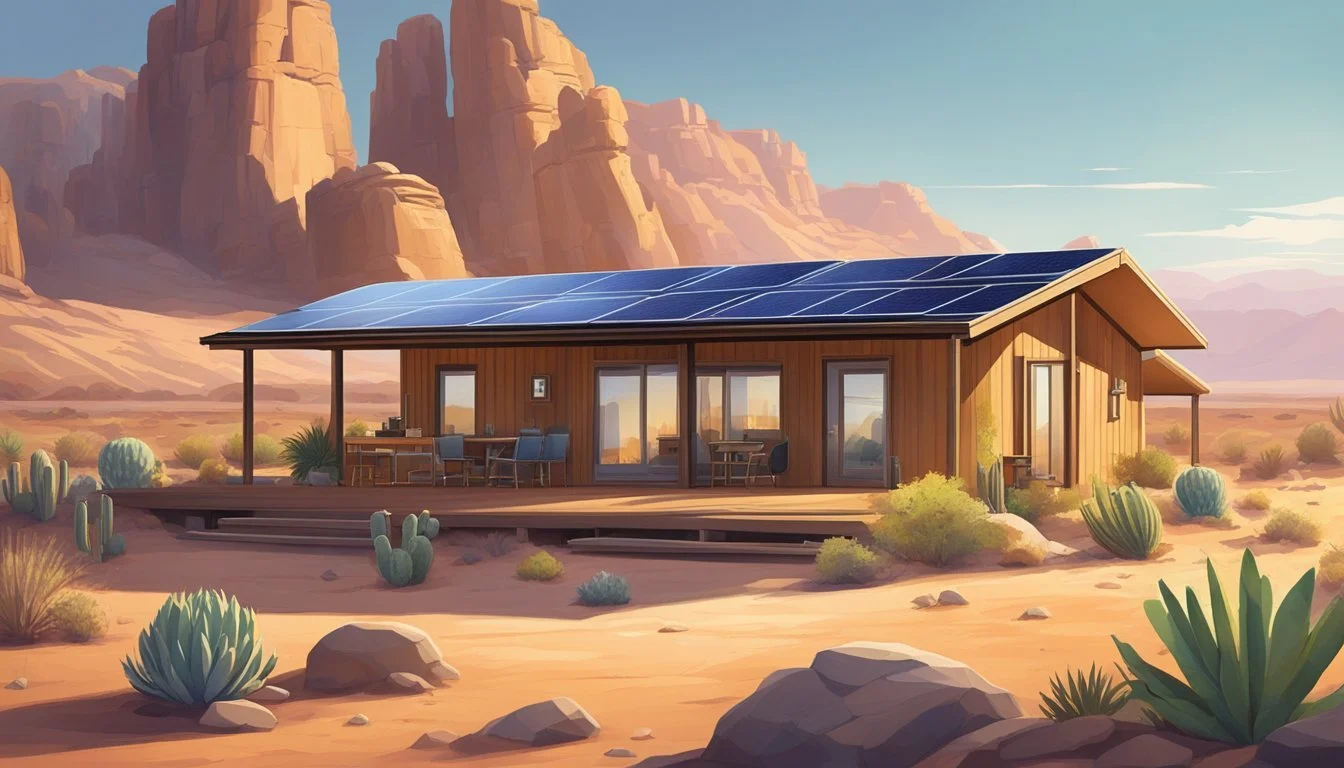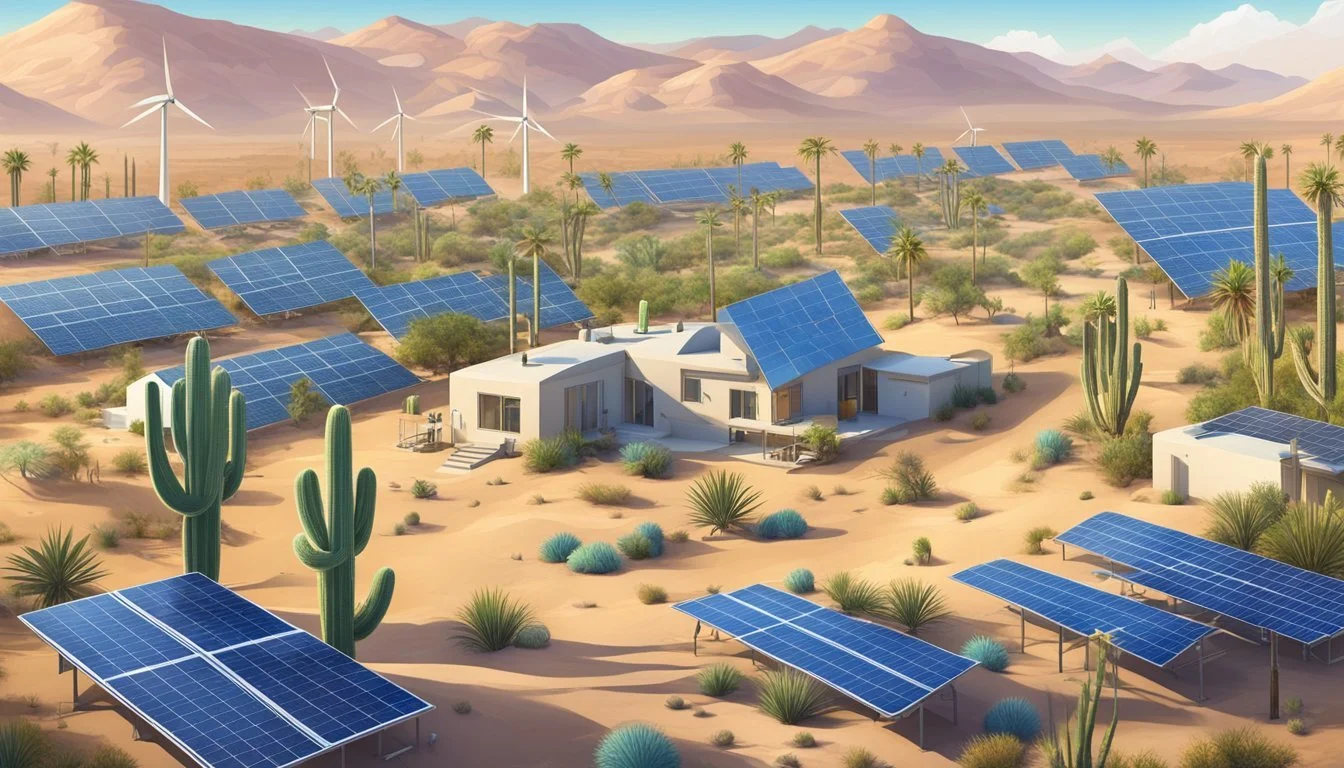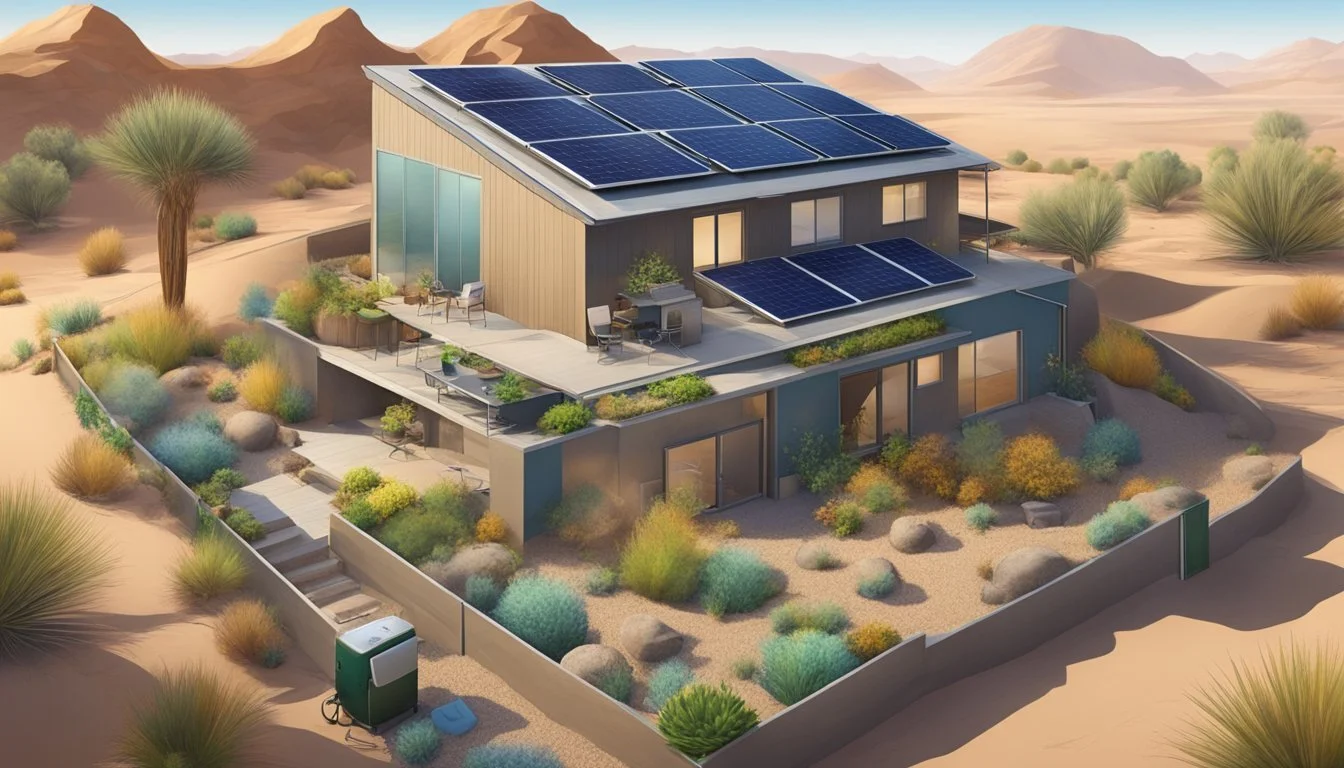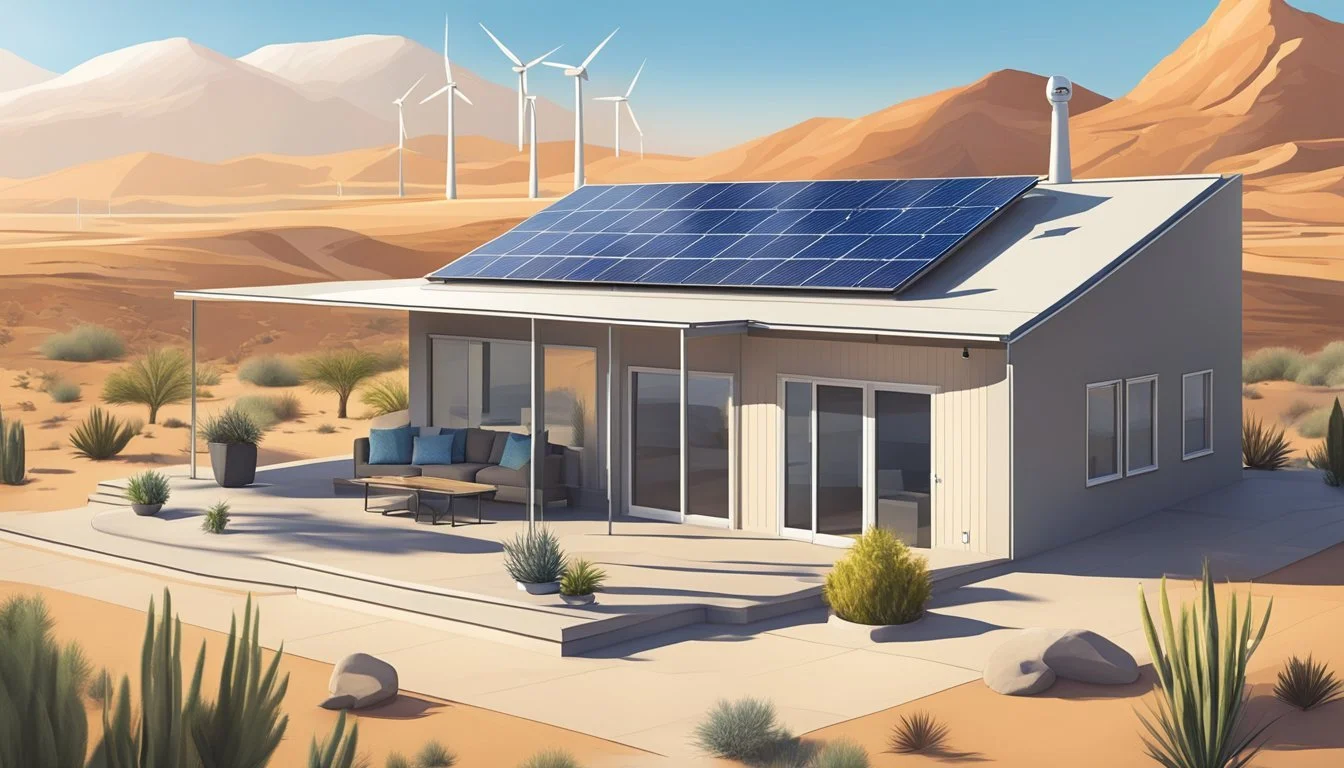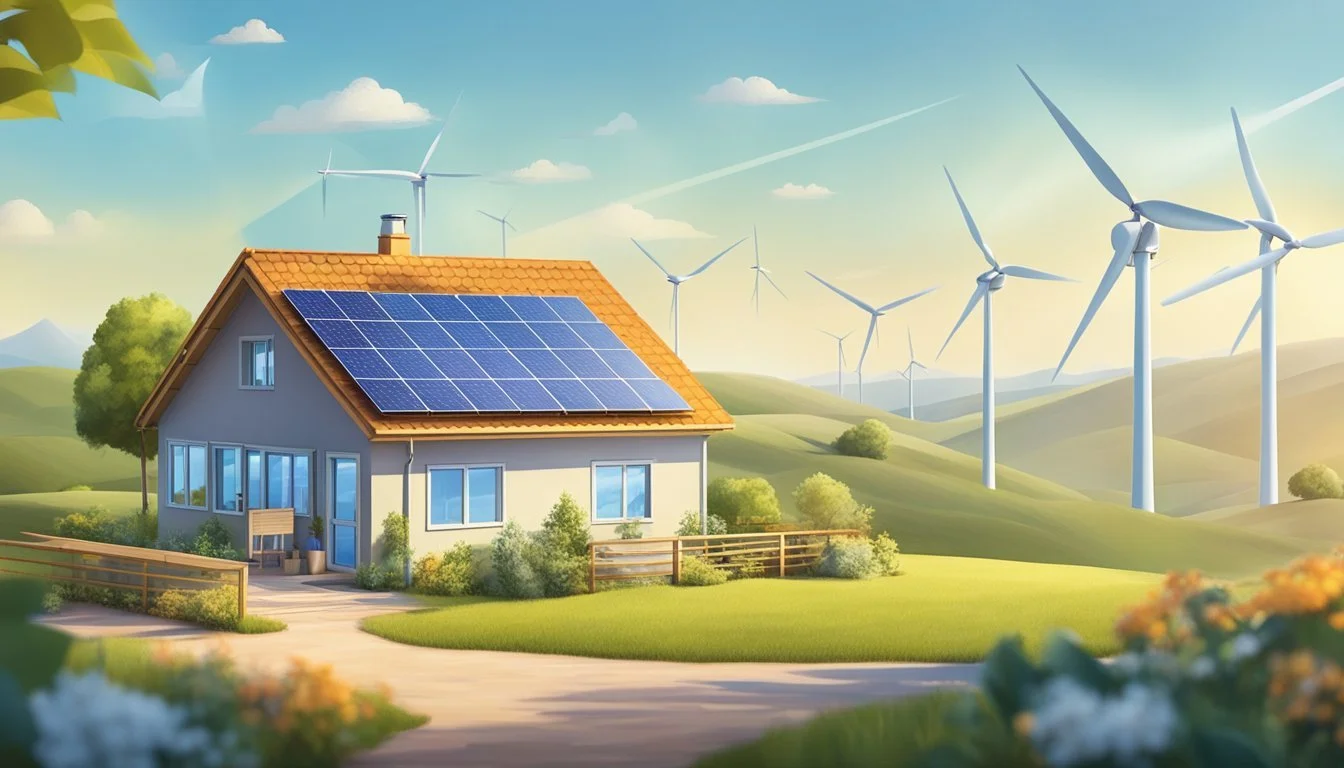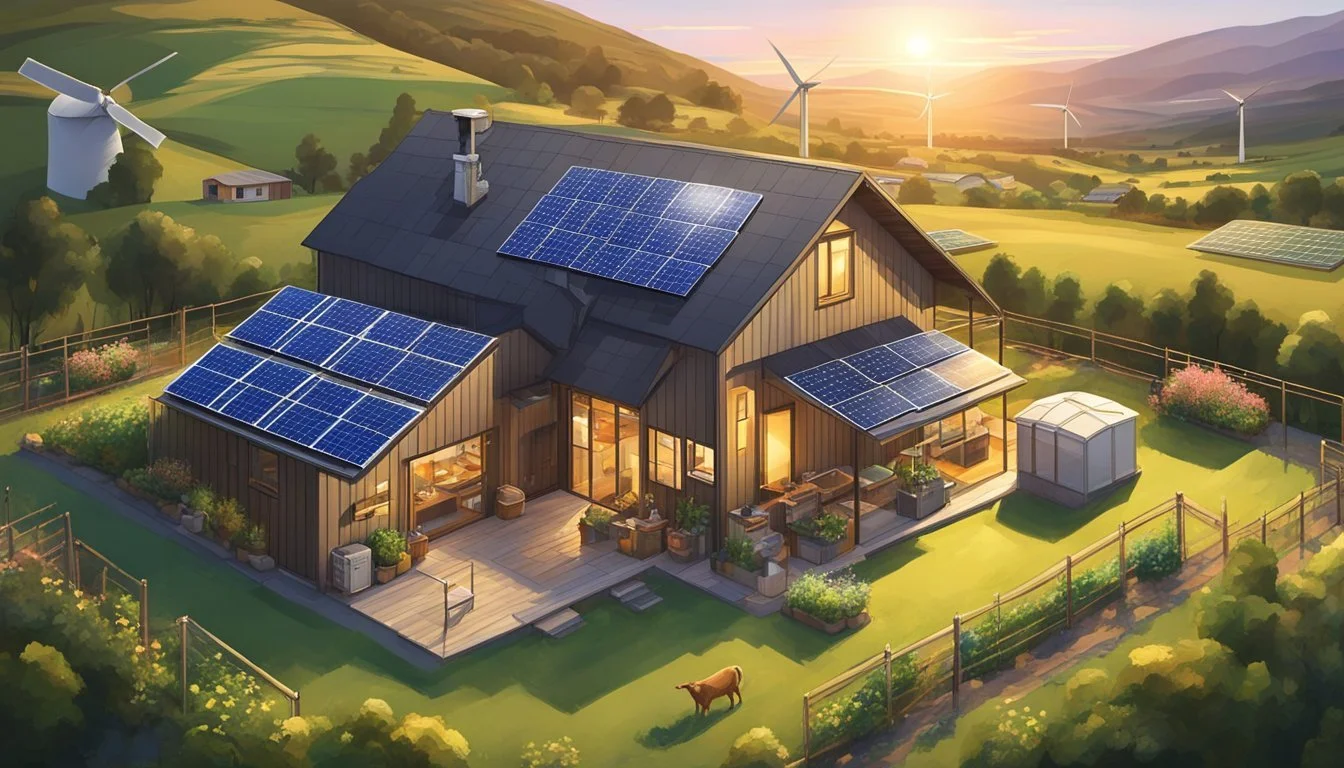Sun Belt Off Grid Living
Sustainable Independence in the Sunniest Regions
Living off the grid in the Sun Belt offers a unique opportunity to embrace self-sufficiency and sustainability. The Sun Belt, characterized by its ample sunlight and warm climate, provides an ideal environment for solar energy utilization, making it viable for those looking to reduce their reliance on public utilities. Harnessing solar power in this region can fulfill energy needs efficiently while supporting an eco-friendly lifestyle.
Navigating off-grid living in the Sun Belt encompasses more than just energy solutions. The abundant sunshine supports not only solar panels but also sustainable agriculture, enabling residents to grow their own food year-round. This approach not only cuts down on grocery bills but also promotes a healthier, organic diet.
Beyond energy and agriculture, living off grid in this region necessitates effective water and waste management strategies. Rainwater harvesting and composting toilets are practical solutions that align well with the sustainable ethos of the Sun Belt lifestyle. These methods ensure resource conservation and limit environmental impact, making off-grid living not just feasible but also rewarding in the Sun Belt.
Understanding Off Grid Living
Off-grid living entails a life of independence by relying on sustainable resources rather than public utilities. It brings significant benefits, along with unique challenges that must be addressed for a successful transition.
Benefits of Off Grid Living
One of the most appealing benefits of off-grid living is the movement towards sustainability. By utilizing renewable energy sources such as solar panels, individuals can reduce their carbon footprint. This not only benefits the environment but also promotes a sustainable way of life.
Independence plays a crucial role in off-grid living. Managing one's own resources such as water, power, and waste systems fosters self-reliance. Additionally, cost savings arise from reduced utility bills. Over time, investing in renewable energy systems can prove to be more economical.
Moreover, individuals can customize their living conditions. Off-grid living often involves choosing remote or rural locations, affording privacy and the freedom to design homes tailored to specific needs and preferences. This can significantly enhance the quality of life.
Challenges of Off Grid Living
Despite its appealing benefits, off-grid living comes with notable challenges. Initial setup costs for renewable energy systems and sustainable technologies can be substantial. This includes the installation of solar panels, wind turbines, rainwater harvesting systems, and compost toilets.
Maintenance and technical know-how are also critical. Individuals need to be prepared to manage and repair their systems. This requires a certain level of technical knowledge and the ability to troubleshoot issues independently.
Legal and regulatory hurdles vary by location. Some regions have specific laws governing off-grid living, which can complicate the process of staying compliant. Understanding and adhering to these local regulations is essential to avoiding legal problems.
Finally, the lifestyle changes associated with off-grid living can be significant. This includes adapting to new ways of using and conserving resources, which can be very different from traditional living. It requires a commitment to sustainability and a willingness to embrace new habits.
Sun Belt Climate and Its Impact
The climate of the Sun Belt offers unique advantages and challenges for off-grid living. This region's weather patterns influence both the livability and the efficiency of sustainable practices such as solar energy utilization.
Seasonal Considerations
The Sun Belt is known for its warm climate, which generally means hot summers and mild winters. Summers can reach extreme temperatures, often surpassing 100°F, necessitating effective cooling solutions.
Winter temperatures are mild, averaging around 50°F to 60°F, reducing the need for extensive heating.
Heavy rains and hurricanes can impact certain areas, particularly in the southeastern parts like Florida and Texas, requiring homes to be fortified against such events.
Drought conditions are another concern in some regions, such as Arizona and Southern California. This makes sustainable water sourcing and storage crucial for off-grid residents.
Maximizing Solar Potential
One of the primary advantages of the Sun Belt is its abundant sunshine, offering an average of 250 to 300 sunny days per year. This makes solar energy highly viable for off-grid living.
Solar panels can produce more electricity in this region compared to others, thanks to high solar irradiance levels.
Installing panels at the correct angles to capture maximum sunlight throughout the year is essential.
Energy storage solutions like batteries are critical for maintaining power during cloudy days or nighttime. Combining solar power with other renewable energy sources like wind or geothermal can enhance reliability.
Efficient solar water heating systems are also beneficial, given the ample sunlight available.
Selecting the Right Location
Choosing the correct location for your Sun Belt off-grid homestead is crucial for sustainability and comfort. Focus primarily on land selection criteria and ensuring adequate water access and resources.
Land Selection Criteria
Carefully assess climate conditions. The Sun Belt has a warm climate but spans various terrains and elevations. Aim for areas with stable temperatures and minimal extreme weather.
Accessibility is key. Ensure quick access to markets, medical facilities, and supply stores. Evaluate soil quality for agriculture. Opt for fertile land that supports diverse crops. Assess sunlight exposure. In the Sun Belt, ample sunlight is a given, but ensure the land has clear, unobstructed sun access for solar panels.
Review local building codes and zoning laws. Compliance is essential for legal and safe construction. Investigate potential natural hazards. Avoid flood-prone areas and regions with high wildfire risk.
Water Access and Resources
Secure a reliable water source. Groundwater wells are common but needing permits and quality testing. An on-site lake or river is beneficial but assess its seasonal fluctuation.
Harvest rainwater as a supplementary resource. Install a robust rainwater collection system with proper filtration. Evaluate water rights and local regulations. Access could be restricted or require legal permissions.
Implement water storage solutions. Use tanks or underground cisterns to store large amounts. Plan for water purification. Establish systems for drinking, irrigation, and hygiene needs.
In summary, access to reliable water ensures self-sufficiency and sustainable living.
Designing Your Off Grid Home
Creating an off-grid home requires careful planning and thoughtful design choices to ensure efficiency and sustainability. Key focuses include selecting appropriate building materials and integrating energy-efficient appliances.
Building Materials and Insulation
Choosing suitable building materials significantly impacts the effectiveness and longevity of an off-grid home. Earth materials like adobe, cob, and rammed earth are popular for their thermal mass, which helps regulate indoor temperatures. Straw bales offer excellent insulation properties and are renewable.
Proper insulation is crucial to minimize energy loss. Sheep's wool, cotton, and cellulose insulation are effective and environmentally friendly options. They enhance the thermal performance of walls, roofs, and floors, maintaining comfortable indoor conditions.
It's essential to implement passive solar design principles. This includes orienting the home to maximize natural light and heat during winter while minimizing heat gain in summer. High-performance windows and thermal curtains further support these goals.
Energy-Efficient Appliances
Energy-efficient appliances reduce energy consumption, critical for off-grid living where energy resources are typically limited. Solar-powered refrigerators and freezers are designed specifically for low energy use without sacrificing performance.
LED lighting is another must-have due to its minimal energy requirements and long lifespan. For cooking, propane stoves and solar ovens are efficient choices, reducing dependency on electricity.
Investing in water-efficient appliances like low-flow showerheads and composting toilets conserves water, which is vital for off-grid homes often relying on rainwater harvesting or limited groundwater. Energy Star-rated appliances, though potentially higher upfront cost, ensure reduced energy consumption over their lifespan.
Energy Solutions for Off Grid Living
For those living off-grid in the Sun Belt, reliable and renewable energy solutions are crucial. This section outlines solar energy systems, wind energy options, as well as hybrid and backup systems that ensure continuous power supply.
Solar Energy Systems
Solar energy is a principal solution for off-grid living due to the abundant sunlight in the Sun Belt. Solar panels can be installed on rooftops, open fields, or even ground mounts to capture solar radiation.
Photovoltaic (PV) panels convert sunlight into electricity, enabling homes to run appliances, lights, and other devices. Modern systems include solar batteries that store excess energy for use during cloudy days or at night.
Maintenance of solar systems is minimal, often requiring just periodic cleaning and inspections. The initial investment is offset by long-term savings on energy bills. Solar power is both an eco-friendly and cost-effective energy source for off-grid living.
Wind Energy Options
Wind energy is another viable option, especially in areas with consistent wind patterns. A wind turbine can be installed to harness wind power and generate electricity. Turbines are most effective when placed on hills or high points, where wind speeds are higher.
Small and medium-sized turbines are suitable for residential use, providing a steady supply of renewable energy. Wind turbines can operate complementarily with solar panels, ensuring energy production even during the night or cloudy weather.
Although initial installation costs can be high, wind energy systems require minimal maintenance and provide a significant reduction in electricity costs over time. Wind power is a sustainable choice for those seeking independence from the grid.
Hybrid and Backup Systems
For added reliability, hybrid systems combine multiple energy sources, primarily solar and wind. These systems maximize energy production by utilizing different sources depending on availability.
Backup generators are essential for ensuring a continuous power supply. These generators can run on propane, natural gas, or diesel, and are activated during prolonged periods of low renewable energy production.
Hybrid systems often include advanced inverters and battery storage solutions to manage energy flow and storage efficiently. This combination ensures that off-grid homes have a reliable energy supply at all times.
By integrating multiple energy sources and incorporating backups, hybrid and backup systems offer resilience and stability for off-grid living in the Sun Belt.
Solar System Components Explained
Understanding the main components of an off-grid solar system is essential for effective design and installation. Key parts include panels and battery banks, which generate and store energy, and inverters and charge controllers, which manage the energy flow.
Panels and Battery Banks
Solar panels are the primary component, converting sunlight into electricity. They are typically mounted on the roof or ground to maximize exposure to the sun. Choosing high-efficiency panels can optimize energy production, especially in regions with variable sunlight.
Battery banks store the generated electricity for use when the sun isn't shining. These banks comprise multiple batteries connected in series or parallel to achieve the desired capacity. Lithium-ion batteries are popular due to their efficiency and long lifespan, although lead-acid batteries are still widely used for their lower upfront cost.
Maintenance of battery banks is critical. Proper storage and regular checks can extend their life and ensure consistent energy supply. Investing in a reliable battery monitoring system can help track performance and diagnose issues promptly.
Inverters and Charge Controllers
Inverters convert the direct current (DC) power generated by the solar panels and stored in the batteries into alternating current (AC) power, which is used by most household appliances. There are three main types of inverters: pure sine wave, modified sine wave, and square wave. Pure sine wave inverters are preferred for their efficiency and compatibility with all types of devices.
Charge controllers regulate the voltage and current sent from the solar panels to the batteries. They prevent overcharging and prolong battery life. Two common types are Pulse Width Modulation (PWM) and Maximum Power Point Tracking (MPPT) controllers. MPPT controllers are more efficient, especially in climates with fluctuating sunlight levels, as they optimize the power output from the solar panels.
Correct installation of inverters and charge controllers is crucial for the safety and efficiency of the solar system. Proper wiring, ventilation, and adherence to manufacturer guidelines can prevent issues and ensure reliable performance.
Water Collection and Management
Effective water management is crucial in Sun Belt off-grid living. Key practices involve capturing rainwater and ensuring its safe storage and purification for daily use.
Rainwater Harvesting Techniques
Rainwater harvesting is an efficient way to secure fresh water. Utilizing rooftop collection systems directs rainwater into gutters and downspouts. This water then flows into storage tanks or barrels. First flush diverters are essential in these systems to remove contaminants from the initial rainfall.
Users can also employ rain chains instead of traditional downspouts. Additionally, surface runoff capture involves channeling rainwater from the land into cisterns or ponds. This secondary method helps supplement water sources during dry spells.
Storage and Purification
Once collected, water must be stored and purified to maintain its quality. Tanks and barrels, made from food-grade materials, are common storage units. These containers need to be covered to prevent contamination and evaporation.
For purification, multi-stage filtration systems are critical. They typically involve sediment filters, activated carbon filters, and UV purifiers. Boiling is a simple yet effective method to kill pathogens, while solar disinfection (SODIS) can harness sunlight for a similar effect.
Implementing filtration and chemical treatments safeguards the water, making it safe for consumption. Routine maintenance of these systems is crucial to ensure their longevity and efficiency.
Food and Agriculture
In the Sun Belt, off-grid living involves utilizing local resources and sustainable methods to ensure a steady food supply. Key practices include eco-friendly farming and efficient food storage.
Sustainable Farming Practices
Residents adopt composting to enrich soil fertility naturally. Compost consists of organic waste like vegetable scraps and yard waste, enhancing plant growth. Many opt for heirloom varieties, which are adapted to local climates and resist pests.
Water conservation is critical due to the region's dry climate. Techniques like drip irrigation reduce water usage. Using permaculture designs, they integrate trees, plants, and livestock to create a balanced ecosystem.
Storage and Preservation
Off-grid individuals use cold storage and root cellars to prolong the shelf life of produce without electricity. Root cellars maintain a cool, consistent temperature ideal for storing root vegetables and tubers.
Canning and drying are traditional methods to preserve fruits, vegetables, and meats. Fermentation not only preserves but also enhances nutritional value. Those in the Sun Belt often leverage the abundant sunlight for solar drying to efficiently dehydrate foods for long-term storage.
Waste Management Strategies
Effective waste management is crucial for maintaining cleanliness and minimizing environmental impact while living off-grid in the Sun Belt. Key strategies include utilizing composting toilets and waste reduction techniques, as well as recycling and repurposing materials.
Composting Toilets and Waste Reduction
Composting toilets are a cornerstone of waste management in off-grid living. These systems convert human waste into compost, eliminating the need for septic systems or sewage connections. This not only reduces water usage but also minimizes waste output.
Proper maintenance of composting toilets is essential. Regularly adding composting materials such as sawdust or peat moss helps to break down waste efficiently and control odors.
In addition to toilets, waste reduction can be enhanced by minimizing packaging waste. Opting for bulk purchasing and reusable containers reduces the amount of trash that needs to be managed. Implementing practical storage solutions also helps in keeping unused items organized and reduces clutter, contributing to a more sustainable living environment.
Recycling and Repurposing Materials
Recycling and repurposing materials are key strategies for off-grid waste management. Items such as glass, metal, and certain plastics can often be recycled locally, reducing the volume of waste that ends up in landfills.
Additionally, repurposing materials can extend their life cycle and reduce the need for new resources. Examples include:
Using old jars for storage.
Transforming wooden pallets into furniture.
Converting metal cans into planters.
Creative repurposing not only addresses waste management but also fosters innovation and resourcefulness. Keeping a detailed recycling plan ensures that recyclable materials are separated and properly handled, further contributing to an eco-friendly lifestyle. Always stay informed about local recycling regulations to ensure compliance and efficiency.
These combined strategies effectively manage waste, reduce environmental impact, and promote self-sufficiency in off-grid living conditions.
Maintaining Off Grid Systems
Ensuring the longevity and efficiency of off-grid systems requires meticulous care. Regular upkeep and being prepared for unexpected issues are crucial for sustained performance and reliability.
Routine Checks and Maintenance
Regularly inspecting and maintaining the components of your off-grid solar system is essential. Solar panels, being the central part, should be cleaned frequently to remove dust, bird droppings, or snow. Dirty panels can significantly reduce energy efficiency.
Additionally, batteries should be checked to ensure they are storing and releasing energy properly. Look for signs of wear and tear, corrosion, or voltage drops. It's also vital to monitor the charge controllers and inverters for any irregularities in performance.
Ensuring the surrounding area of your solar panels is clear of any obstructions, like overgrown branches, helps maximize sunlight exposure. Routine trimming of foliage can prevent shadows and enhance energy output.
Dealing with Emergencies
Despite regular maintenance, emergencies can occur, affecting the off-grid energy system. Power outages due to unpredictable weather or equipment failure need quick responses.
Having a backup generator and a supply of fuel can be a lifesaver during prolonged outages. It's also beneficial to keep spare parts such as fuses, cables, and connectors. Regularly testing your backup systems ensures they are ready when needed.
In the event of battery failures, having an understanding of basic troubleshooting can help determine if a system reset or replacement is required. Keeping emergency contacts for local technicians can expedite solutions.
Preparedness and proactive measures significantly reduce downtime and prolong the system's life.
Lifestyle Considerations
Living off-grid in the Sun Belt involves embracing aspects of self-sufficiency and forming connections with nature. It also necessitates developing the necessary skills and building a supportive community.
Community and Networking
Building a community is vital for off-grid living. Neighbors can share resources such as tools and expertise. Attending local farmer's markets, joining social groups, or participating in online forums tailored to off-grid living helps newcomers integrate effectively.
Networking: Engaging with others provides emotional support and partnerships. Volunteering at community gardens or organizing skill-sharing workshops enhances relationships. Collaboration with nearby homesteaders ensures better preparation for crises, such as natural disasters.
Benefits: Strong community ties foster a sense of security and shared responsibility. Connecting with experienced individuals accelerates learning and promotes sustainable practices. This support network forms the backbone of successful off-grid living.
Education and Skills Building
Learning essential skills is crucial for maintaining an off-grid lifestyle. This includes knowledge of solar power systems, water management, and organic farming techniques. Workshops, online courses, and community colleges offer valuable educational resources.
Skills Building: Practicing self-sufficiency by growing food, applying permaculture principles, and understanding renewable energy is fundamental. Mastery of construction skills, like building rainwater collection systems or compost toilets, is also beneficial.
Practical Knowledge: Hands-on experience through internships or partnerships with established off-grid communities helps solidify these skills. Developing a diverse skill set ensures resilience and adaptability in the face of unforeseen challenges.
The Sun Belt offers ample natural resources to support off-grid living, and building a robust knowledge base is key to maximizing these opportunities.
Cost Analysis and Budgeting
Living off-grid in the Sun Belt comes with a range of costs and financial considerations. Upfront investments and long-term financial planning are crucial when budgeting for this lifestyle.
Understanding Upfront Investments
The initial cost of off-grid living includes purchasing land, building a home, and setting up essential systems. Land in the Sun Belt varies widely, with prices depending on location and size. Construction costs also fluctuate based on materials and design.
Significant investments include solar panels, battery storage, water collection systems, and septic systems. For example, installing solar panels can cost between $10,000 to $30,000. Battery storage adds another $5,000 to $10,000.
Water systems, both collection and filtration, can range from $1,000 to $8,000. Septic systems typically cost $3,000 to $7,000. These initial expenditures are essential for establishing a self-sufficient off-grid home.
Long-Term Financial Planning
Ongoing costs involve maintenance, repairs, and potential upgrades to systems. Monthly expenses can vary greatly but often include utility replacements like battery updates and routine inspections of water systems. For instance, maintaining solar panels and batteries might annually cost around $500 to $1,000.
Gardening and food production also come with recurring expenses. Budgeting for seeds, tools, and soil amendments is necessary. Livestock maintenance, if applicable, adds to the ongoing costs.
Financial planning should account for emergency funds to cover unexpected repairs or energy storage replacements. Considering insurance for the property and systems is also advisable. Practical cost-saving strategies, such as energy-efficient appliances and water conservation measures, are beneficial for reducing long-term expenditures.
Regulatory Considerations and Compliance
Navigating the legal landscape for off-grid living in the Sun Belt entails understanding local zoning laws, building permits, and safety standards. Ensuring compliance with these regulations is essential for a successful off-grid lifestyle.
Zoning Laws and Off Grid Restrictions
Zoning laws play a significant role in determining the feasibility of off-grid living. These laws specify the types of structures that can be built and the land use within different zones. Rural areas often have more lenient zoning laws, whereas urban and suburban regions tend to impose stricter regulations.
In the Sun Belt, municipalities may have varying rules on what constitutes an acceptable off-grid home. It is crucial to check local zoning maps and consult with local authorities. Restrictions may include minimum lot sizes, allowable types of construction, and requirements for utility connections.
Property owners may need to advocate for changes if current zoning laws are prohibitive. Understanding these nuances helps ensure that planning and construction efforts are legally sound and compliant.
Building Permits and Standards
Acquiring the necessary building permits is a critical step in off-grid construction. Permits ensure that all safety, health, and environmental standards are met. Building codes can vary widely by location, particularly in regions like the Sun Belt where environmental conditions such as heat and storms are considerations.
Permits often require proof of compliance with standards for electrical systems, sanitation, water supply, and structural integrity. The inspection process plays a crucial role in verifying that these standards are met. Non-compliance can result in fines, mandatory modifications, or even demolition of non-compliant structures.
Prospective off-grid residents should consult local building departments early in the planning phase. Engaging with inspectors and understanding local building requirements helps to streamline the permit approval process and avoid costly delays.
Conclusion
Off-grid living in the Sun Belt offers a unique opportunity to harness solar power effectively. The region's ample sunlight provides a reliable source of renewable energy, enabling residents to generate electricity independently.
By focusing on solar power, individuals can significantly reduce their reliance on traditional energy sources. Solar panels convert sunlight into electricity, which is then stored in batteries for use during cloudy days or nighttime.
Benefits of Solar Power in Off-Grid Living:
Energy Independence: Solar power allows for self-sufficiency, freeing residents from the constraints of the traditional power grid.
Environmental Impact: Utilizing solar energy reduces carbon emissions, supporting a more sustainable lifestyle.
Cost-Effectiveness: Over time, solar power can lead to substantial savings on energy costs.
Solar power systems require proper maintenance to ensure efficiency. Regular cleaning of solar panels and periodic checks of battery health are essential tasks.
Incorporating energy-efficient practices further enhances the benefits of off-grid living. Using LED lighting, energy-efficient appliances, and mindful energy consumption helps maximize the utility of generated power.
The combination of renewable resources and energy efficiency makes off-grid living in the Sun Belt not only viable but also rewarding. With the right approach and tools, residents can achieve a sustainable and independent lifestyle.

